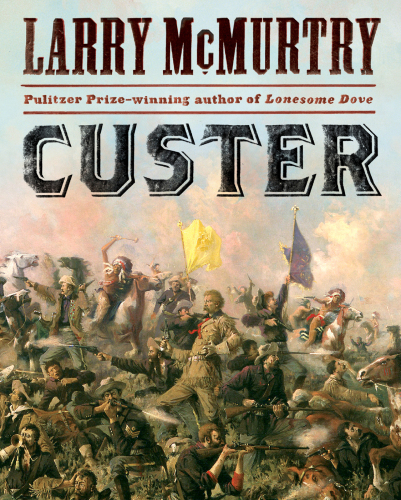
Custer
کتاب های مرتبط
- اطلاعات
- نقد و بررسی
- دیدگاه کاربران
نقد و بررسی

September 15, 2012
A Pulitzer Prize winner's idiosyncratic take on one of American history's great blunderers. Clearly well-read on the subject--McMurtry (Hollywood: A Third Memoir, 2011, etc.) generously refers readers to Evan Connell, Nathaniel Philbrick and others for more detailed information--once the owner of a vast collection of Custer-ology, twice a visitor to the Little Big Horn battlefield, the celebrated novelist offers not quite a history and barely the "short life of Custer" he proposes. Rather, this effort is best understood as an informed commentary on the dashing cavalry officer and on the Custer moment, the closing of "the narrative of American settlement," which featured an unusual twist: a dramatic victory by the ultimate losers, the Native Americans. A few of McMurtry's observations are not especially interesting (the author's own encounters with the Crow and Cheyenne tribes), and some wander off topic (Sitting Bull's passion for Annie Oakley), but many offer fresh insights on the Custer story. McMurtry fruitfully muses on the striking similarities between Custer and another overhyped western legend, John C. Fremont, the "confusion of tongues" that complicated the period of Western settlement, the willingness of Custer's Indian scouts to accompany their commander to a certain death, George and Libbie Custer's complicated marriage and the "modern" (in 1876) media mechanisms poised to supercharge Custer's fame. Many products of that publicity machine are spectacularly reproduced here, including photos, maps, paintings, lithographs, posters, magazine covers and newspaper headlines, all of which attest to the national fascination with this endlessly revisited story and with the man whose final message to his subordinate--"Come on, be quick. Be quick"--went tragically unheeded. The distilled perceptions of a lifetime of study, beautifully illustrated.
COPYRIGHT(2012) Kirkus Reviews, ALL RIGHTS RESERVED.

May 15, 2012
McMurtry on George Armstrong Custer; that should be larger than life. With no cavalry survivors and only scattered Indian accounts after Custer and his 7th Cavalry attacked a large Lakota Cheyenne village on the Little Bighorn River in Montana Territory, it's hard to say what really happened on that hot June day in 1876. But McMurtry's account of the man should be vivid--for one thing, there are 150 four-color illustrations.
Copyright 2012 Library Journal, LLC Used with permission.

October 15, 2012
Pulitzer Prize winner McMurtry continues to be an outstanding chronicler of western legend and lore. He has retained a long fascination with the myths surrounding General Custer and the Battle of the Little Big Horn. This book is neither a comprehensive nor a conventional biography of Custer. Instead, McMurtry offers a series of vignettes and musings about various aspects of Custer's career, his personality, and the cultural milieu that led to his iconic status. Despite his interest in his subject, McMurtry often paints an unflattering and probably unfair portrait of Custer. He claims all of his officers despised him, which ignores his small but loyal core of supporters within the Seventh Cavalry. He suggests Custer lacked conscience, forgetting his principled but damaging (for him) testimony before Congress about corruption on Indian reservations. Still, newcomers to Custermania will find many of the tidbits very interesting, and that should encourage them to read more comprehensive biographies.(Reprinted with permission of Booklist, copyright 2012, American Library Association.)

























دیدگاه کاربران